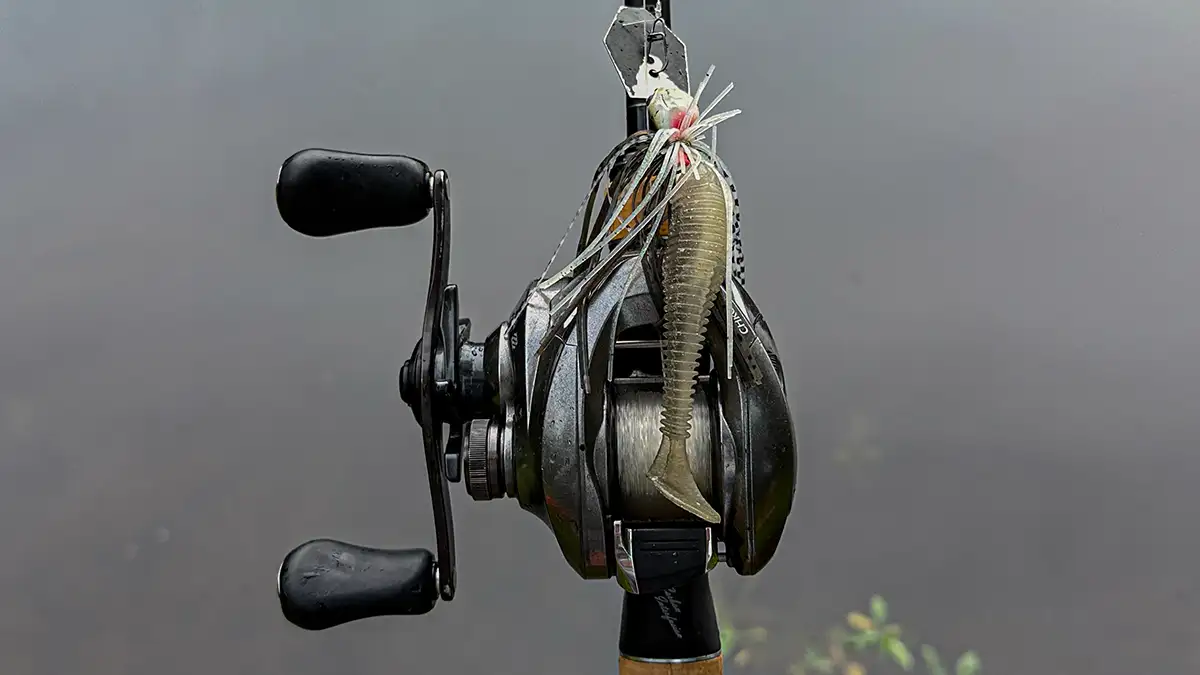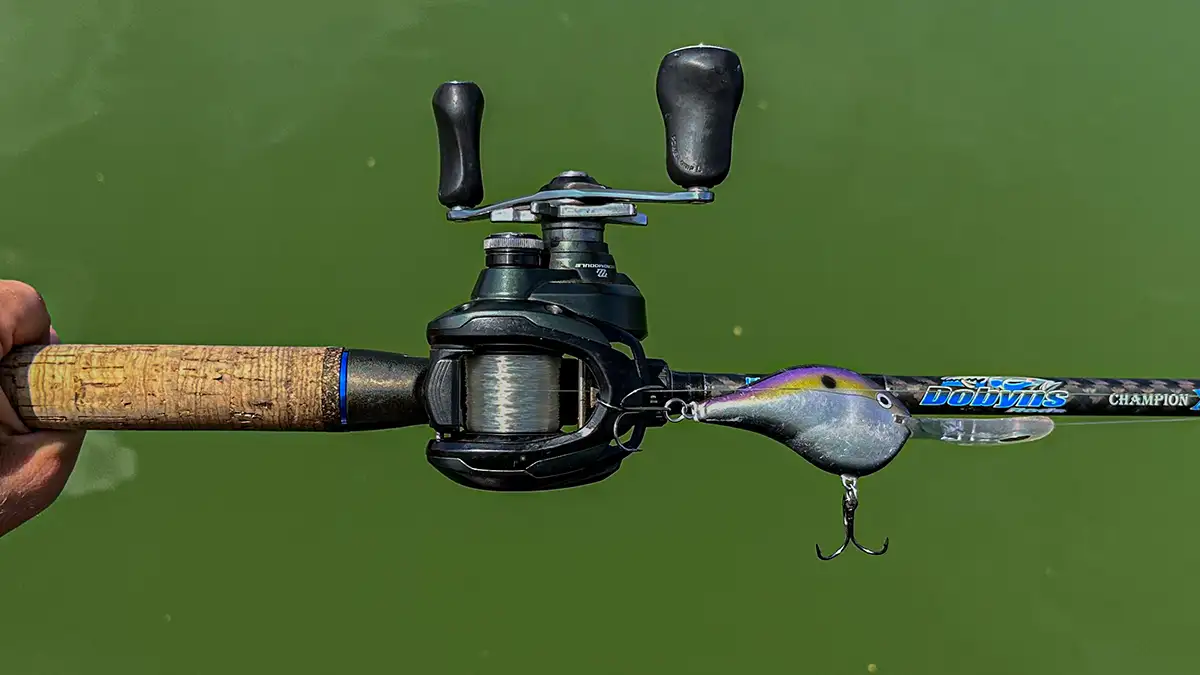Over the years, bass fishing lines have slowly progressed from the old school monofilament to numerous new age options. There are multiple kinds of fishing lines with tons of manufactures that all make their own versions. While it is always great to have options, this can make choosing the right fishing line difficult. We’ll explain when to use each type of fishing line based on the line strength, visibility and stretch.
DIFFERENT TYPES OF FISHING LINE
Fishing line has progressed exponentially over the last few decades. Some of the oldest lines in fishing are actually braid, however it wasn’t made with the modern materials we are used to seeing nowadays. Instead it was woven with other materials such as silk glands, creating a stiff and slightly transparent line.
Fast forward many years later and monofilament was created. This quickly became the norm thanks to its revolutionary durability and transparency. This line went on to be a bass fishing staple for decades. Since then, both fluorocarbon and modern versions of braided fishing line have taken over the bass fishing market. While fluorocarbon is likely the most commonly used line, all three still have their own time and place based on your chosen technique.
HOW TO CHOOSE THE RIGHT FISHING LINE
Fluorocarbon, braid and monofilament all have their own positive and negative attributes that make them great for certain styles of bass fishing. The factors that affect these lines performance are stretch, transparency and durability. It is important to choose a line that fits the correct criteria for your chosen technique. This means that if you are fishing an area with muddy water and heavy cover, you need a line with little stretch and lots of strength. This dirtier water clarity allows you to sacrifice your lines visibility and increase your lines overall durability, allowing for a much thicker gauged line.
However, in a clear water scenario you’d want a more transparent line with a thinner diameter. The increased water clarity calls for a thinner line in order to give your bait more action and a lifelike presentation. Cover and water clarity are often your two biggest factors when deciding what kind of line to throw. Heavy cover means you need something durable, while clear water calls for a transparent, thinner style line. Fluorocarbon, monofilament and braided line are able to tackle any fishing scenario you might encounter thanks to their own unique characteristics.
BENEFITS OF FLUOROCARBON
Since the invention of fluorocarbon in 1971, it has remained an extremely popular style of fishing line. In today’s time it is arguably the most popular style of line used for the vast majority of bass fishing techniques under the surface. This is due to the lines overall performance in both clear and dirty water scenarios. Fluorocarbon is extremely transparent while still remaining durable in heavy cover situations. This is a plastic polymer line and is designed to be used in both heavy cover and finesse situations.
This line can be used in a numerous techniques, however my favorites are baits with a singular hook such as a jig or spinnerbait. I like fluorocarbon for this style of bait because it gives me enough strength to get a good hook set, while still being clear enough to deliver a lifelike presentation. Fluorocarbon has very little stretch, making it a great option for getting good hook penetration on ticker gauged hooks. I typically using anything from 15 to 20-pound test when throwing a jig or spinnerbait on fluorocarbon line.
Another application fluorocarbon is great for is using it as a leader. When throwing lures such as a Shakey head or drop shot, I will always add a long fluorocarbon leader to the end of my line. This gives your bait a finesse presentation by decreasing the diameter and transparency of your line. A braid to fluorocarbon leader is my go to method for the majority of spinning rod techniques. Anything from an 8 to 12-pound leader is typically standard for this style of fishing.
BENEFITS OF MONOFILAMENT
Monofilament is the original transparent fishing line, and is still used for a variety of fishing techniques. Monofilament is clear much like fluorocarbon, however it has a slightly thicker diameter. It’s also much stretchier than other types of line fishing line. This can be great for treble hook baits or other techniques with light wire hooks. Monofilament also floats giving baits a unique presentation. This line is much cheaper than both braided and fluorocarbon line, making it the most economical option.
A few of my favorite times to use monofilament is for a leader and deep cranking. I typically tie a monofilament leader when throwing a topwater lure or a Carolina rig. A monofilament leader keeps your line from sinking into the water, making it much easier to work a topwater lure properly. It also keeps your hooks from getting fowled in the braid. Monofilament is also great for a Carolina rig because it allows your bait to float up off the bottom. This gives your bait a weightless presentation which I feel gets more bites compared to a fluorocarbon leader.
Deep cranking is another application where monofilament shines. The added stretch keeps you from ripping the treble hook out of the fishes mouth when winching them to the boat. The thicker gauge line helps to keep you from casting your bait off when throwing magnum sized crank baits, which is a common issue when using fluorocarbon line. This line’s increased abrasion resistance is also great for cranking around timber or other types of cover that can fray your line. I typically use anywhere from 10 to 12-pound monofilament when throwing deep diving crank baits.
BENEFITS OF BRAIDED LINE
Last but certainly not least, braid is an extremely popular style of fishing line that puts giant bass in the boat all across the country. Braid is the strongest of the three lines, capable of handling any sized fish you throw at it. This line is also extremely sensitive, this is because broad has zero stretch which allows you to feel bites much easier. While this line is stronger and more sensitive, it’s not transparent making it much easier to see. This is why anglers often tie fluorocarbon leaders to their braided line.
A few of the most popular techniques for braid are on spinning reels and when fishing heavy cover. I use braid on all my spinning reels for a multitude of reasons. This line allows you to cast long distances with minimal tangles. This line is also much more sensitive which is important for finesse techniques. The lines thin diameter also allows for more line on the spool and increased casting distance. I typically use 10-pound high-vis braid on all my spinning reels.
On the other side of the spectrum, braid shines around heavy cover such as grass and wood. Some of the more popular styles of braid fishing include topwater frogs, punching and flipping. This line has zero stretch and is great for cutting through grass, making it the go to option for fishing vegetation. You can also use much higher test line when throwing braid, which allows you to pull fish out of thick mats or other types of cover. Anything from 50 to 80-pound braid is typically standard when fishing around heavy vegetation.
Fluorocarbon, monofilament and braid all have their own unique characteristics that make them perform in their own way. While picking the right line may seem confusing at first, it becomes simple when you focus on water clarity and the amount of cover present. While fluorocarbon may be the most popular, all three of these lines have a place in my boat thanks to their differing amounts of strength, transparency and stretch.
















